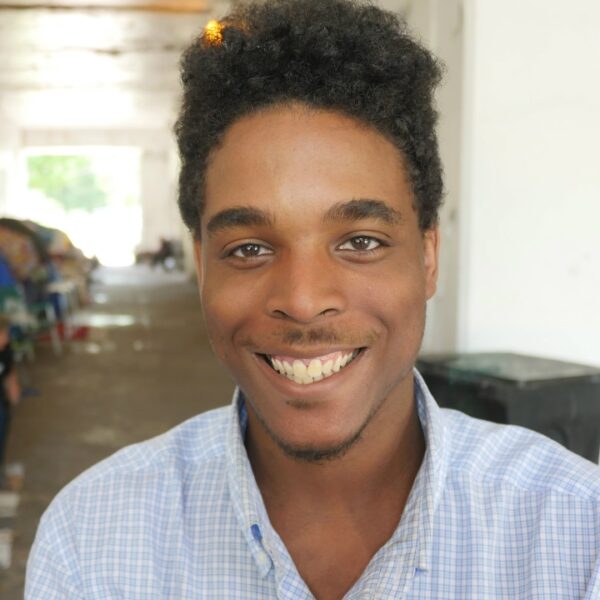Where the Weather, Wildlife, and Isolation Can All Be Deadly
With the increase of homelessness criminalization and encampment sweeps that have continued during the pandemic in defiance of CDC guidance, unhoused people are being left with fewer and fewer places where they’re allowed to simply exist without risking arrest.
The city of Los Angeles is leading the charge in micromanaging the lives of poor people, passing new laws restricting where people can sit, lie, or sleep to practically nowhere.
Seriously, look at the map, and you’ll see just how much of Los Angeles has effectively become a homeless-exclusion zone. Forbidden areas include (but are definitely not limited to):
- underpasses
- bridges
- tunnels
- anywhere within 500 feet of a school, daycare, library, or park
- anywhere within 5 feet of a driveway or an “entrance or exit,” which seems quite vague
- even within 1,000 feet of homeless shelters
Next time you walk around your town or city with your handy dandy measuring wheel, take note of how much area that covers and how little is left available. You may be surprised.
So Where Can Houseless People Legally Exist?
Given all of these new restrictions and how difficult it is to actually map and accurately enforce all of these parameters, homeless people are being forced further and further away from residential areas, city centers, and anywhere that can actually supply the resources needed to sustain life.
A growing number of homeless people are being forced into the desert. Miles away from running water, upwards of 200 people are fighting for survival in tents and whatever vehicles managed to make the trip over the rugged terrain out at the northern edge of Los Angeles County. They face extremes of all kinds, from scorching heat to freezing snows, all under the constant assault of the never-ending gritty wind.
Needless to say, this is not an ideal place to be living with limited resources.
While the Mojave is a beautiful landscape popular with hikers and outdoor enthusiasts, it is still an inhospitable, dangerous place that can turn deadly in a moment, even with the aid of expensive outdoor gear and specialty equipment. How much more so for those who came here with next to nothing?
This Is No One’s First Choice
The 200+ people currently calling this inhospitable desert home all share a similar story of being kicked out of other places and ending up here.
The nearby city of Lancaster is a frequent last stop, where crackdowns on encampments, loitering, and unauthorized camping pushes people further and further away from civilization.
Life in the desert is hard. Though there is less (not zero) police harassment and violence from housed people to contend with, the heat and lack of access to water are frequently deadly. By July, 17 deaths of homeless people were recorded in the desert for 2022. That was before the devastating heat wave hit California in early September. That number will only climb.
Residents in the area report that police occasionally check if anyone living there has active warrants for their arrest, but they offer no assistance or services. Many residents rely on assistance and supplies provided by a local ACLU chapter and various other volunteers as their only lifeline.
Is Your ‘Beautiful Downtown’ Worth People’s Lives?
Residents, business owners, and lawmakers living comfortably in Los Angeles with cool water and cool air piped directly into their homes might find it difficult to believe that their actions have anything to do with the poor unfortunate souls dying daily in the desert. But, tracing back the chain of events, ordinary people’s desire for “clean streets” led to unhoused people being pushed farther and farther out. Eventually, there was no one around to complain about their existence.
Short-sighted NIMBYs campaign for “unsightly” encampments to be removed from their cities. They demand homeless people go “somewhere else” without any care for where that somewhere else may be. They want all unhoused people to be out of sight so they don’t have to feel uncomfortable when they see them. Of course, that discomfort is entirely a product of their own stereotypes, misconceptions, and unwillingness to exercise compassion.
Maybe they’ve been deluding themselves with the idea that forcing unhoused people off the street is “for their own good.” Maybe they’ve convinced themselves that when an encampment gets swept away, all people, pets, and possessions magically get housed in safe and secure housing that meets their individual needs. Or maybe they’ve just been trying not to think too hard about the consequences of their own actions.
Whatever the case may be, it’s time for a wake-up call.
When we push homeless people out of their chosen homes, the vast majority of the time, they don’t end up somewhere better. They end up somewhere worse.
The inevitable result of cities cracking down and pushing unhoused people out of habitable areas is that they keep being pushed and pushed and pushed until they end up somewhere uninhabitable, where no one else lives to push them out. Out there, there are no resources. It’s difficult to get water, let alone get connected with an organization that can provide housing. This trip, for most homeless people, is a one-way journey.
Yet somehow, the “concerned citizens” group that insisted on sweeps and crackdowns because “letting people live on the street is inhumane” has nothing more to say once everyone has been pushed out of their neighborhood. Their true, unspoken goal has been achieved.
Let me say this very clearly.
Your comfort is not more important than other people’s lives. Your business’s profits are not more important than other people’s lives. And your property values are not more important than other people’s lives.
If you refuse to help homeless people, then at least stop harming them.













